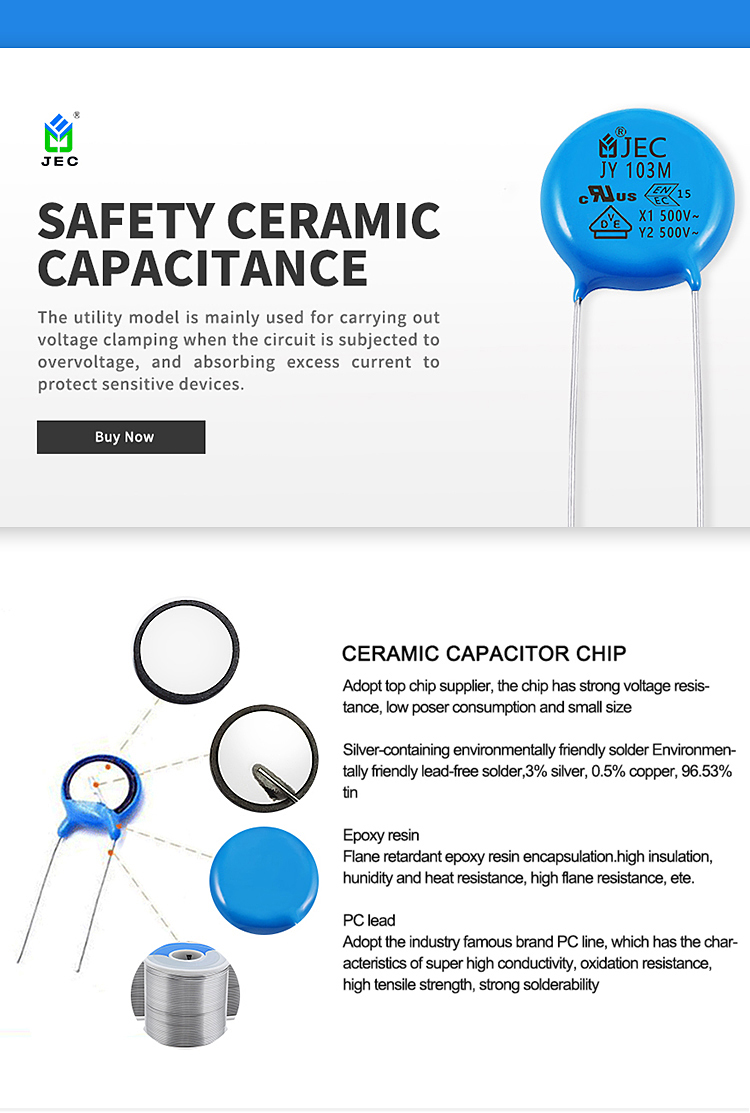Features
Ceramic dielectric with high dielectric coefficient
Flame-retardant epoxy resin package
Passed CQC, VDE, ENEC, KTL, IEC-CB, UL, CUL certification standards
Comply with ROHS directive
Structure

Recommended Application Areas

Suitable for power circuit noise suppression circuit of electronic equipment
Can be used as antenna coupling jumper and bypass circuit
FAQ
Why do we use capacitors in series or in parallel?
When capacitors are connected in series, the capacitance is reduced, and the withstand voltage is increased. When the capacitors are connected in parallel, the capacitance increases (adding the capacitance of each capacitor). So series capacitors are to increase the withstand voltage, and parallel capacitors are to increase the capacitance.
What happens if the capacitor does not discharge during electrical maintenance?
In the process of electrical maintenance, for small-capacitance low-voltage capacitors in the circuit, there is generally no danger even if they are not discharged during repair, but for power circuits, especially large-capacitance and high-voltage capacitors in switching power supply circuits, they must be discharged first. Otherwise, on the one hand, electric shock accidents are likely to occur, and on the other hand, it is easy to damage the measuring instruments.